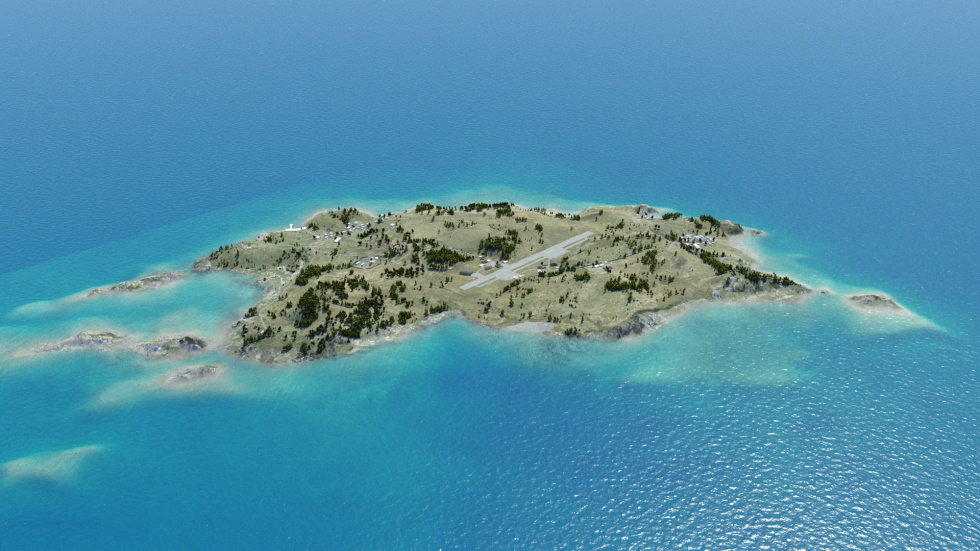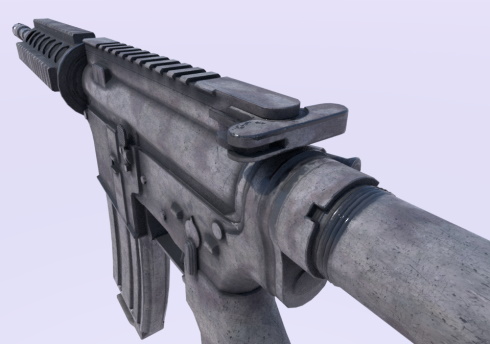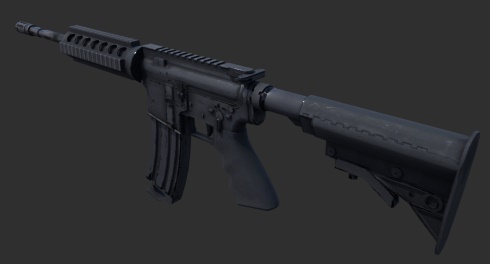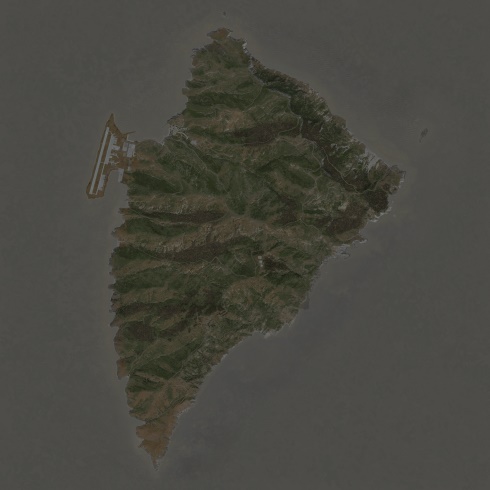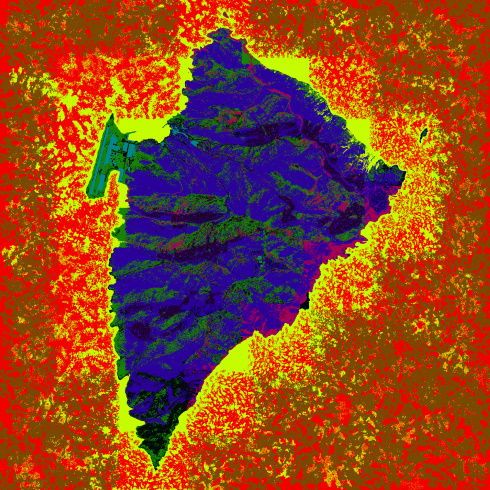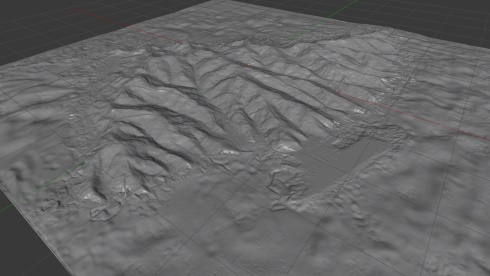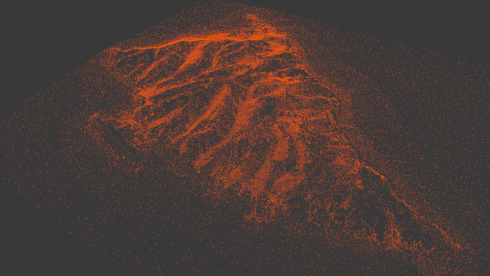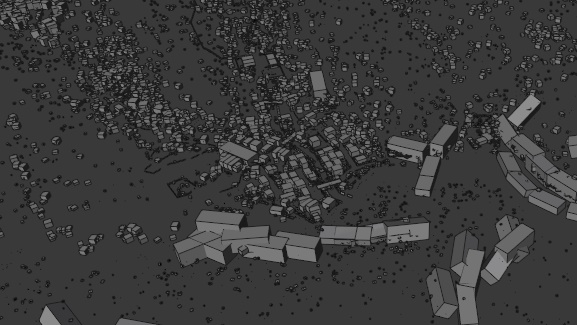Jason Deacutis - Portfolio
Reverse Engineering - Battlefield 3
Disclaimer: All reverse engineering I conduct is purely for educational purposes. I do not claim to be responsible for any of the original work.



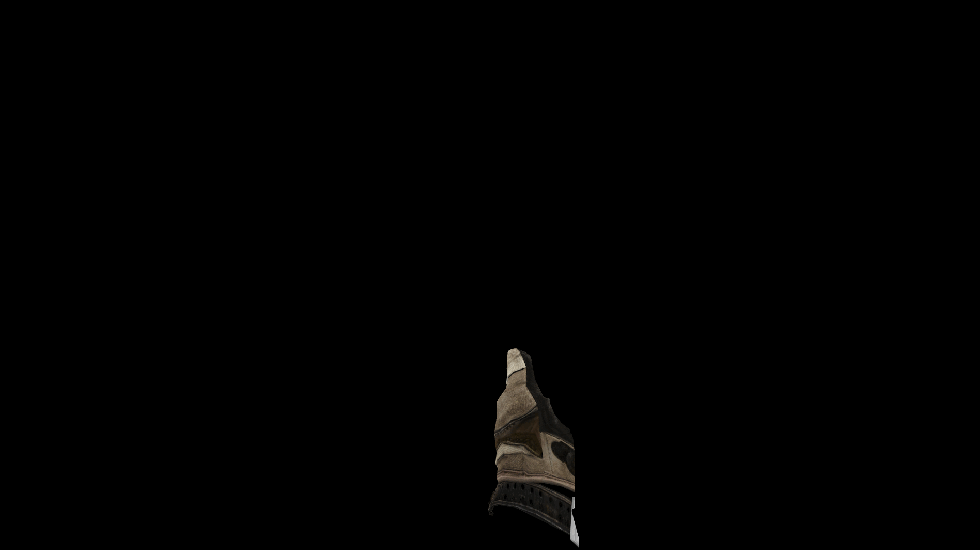
To understand how the texturing was achieved, I wrote a Python script in Blender to convert shader assembly to a material node network.
ps_5_0
dcl_globalFlags refactoringAllowed
dcl_constantbuffer cb0[4], immediateIndexed
dcl_constantbuffer cb2[21], immediateIndexed
dcl_constantbuffer cb1[12], immediateIndexed
dcl_sampler sampler0 (s0), mode_default
dcl_resource_texture2d (float,float,float,float) texture_Diffuse (t1)
dcl_resource_texture2d (float,float,float,float) texture_Camo (t2)
dcl_resource_texture2d (float,float,float,float) texture_Texture (t3)
dcl_resource_texture2d (float,float,float,float) texture_Specular (t4)
dcl_resource_texture2d (float,float,float,float) texture_Texture3 (t5)
dcl_input_ps linear v1.xyz
dcl_input_ps linear v2.xyz
dcl_input_ps linear v3.xyz
dcl_input_ps linear v4.xyz
dcl_input_ps linear v5.xy
dcl_output o0.xyzw
dcl_output o1.xyzw
dcl_output o2.xyzw
dcl_output o3.xyzw
dcl_temps 4
0: lt r0.x, l(1.0000), v5.y
1: lt r0.yzw, v5.yyxx, l(0.0000, 0.0000, 0.0000, 1.0000)
2: and r0.xz, r0.xxzx, l(1.0000, 0.0000, 1.0000, 0.0000)
3: movc r0.yw, r0.yyyw, l(0, 0, 0, 0), l(0.0000, 1.0000, 0.0000, 1.0000)
4: mul r1.xy, v5.xyxx, external_ScratchTiling.xyxx
5: sample_indexable(texture2d)(float,float,float,float) r1.xyz, r1.xyxx, texture_Texture.xyzw, sampler0
6: add r1.y, -r1.x, r1.y
7: mad r0.z, r0.z, r1.y, r1.x
8: add r1.x, -r0.z, r1.z
9: mad r0.x, r0.x, r1.x, r0.z
10: mul r0.x, r0.x, r0.y
11: sample_indexable(texture2d)(float,float,float,float) r1.xyz, v5.xyxx, texture_Specular.xyzw, sampler0
12: mul r0.y, r1.y, external_WearAmount.x
13: log r0.y, r0.y
14: mul r0.y, r0.y, external_WearPower.x
15: exp r0.y, r0.y
16: min r0.y, r0.y, l(1.0000)
17: add r0.y, -r0.y, l(1.0000)
18: mul r0.x, r0.y, r0.x
19: add r0.y, -external_SmoothnessWear.x, external_SmoothnessRegular.x
20: mad r0.y, r0.x, r0.y, external_SmoothnessWear.x
21: add r0.z, -r0.y, external_SmoothnessMasked.x
22: mad o0.w, r0.w, r0.z, r0.y
23: mul r0.yz, v5.xxyx, external_NormalTiling.xxyx
24: sample_indexable(texture2d)(float,float,float,float) r0.yzw, r0.yzyy, texture_Texture3.zxyw, sampler0
25: mul r0.y, r0.w, r0.y
26: mad r2.xy, r0.yzyy, l(2.0000, 2.0000, 0.0000, 0.0000), l(-1.0000, -1.0000, 0.0000, 0.0000)
27: dp2 r0.y, r2.xyxx, r2.xyxx
28: add r0.y, -r0.y, l(1.0000)
29: max r0.y, r0.y, l(0)
30: sqrt r2.z, r0.y
31: dp3 r3.x, r2.xyzx, v2.xyzx
32: dp3 r3.y, r2.xyzx, v3.xyzx
33: dp3 r3.z, r2.xyzx, v4.xyzx
34: dp3 r0.y, r3.xyzx, r3.xyzx
35: rsq r0.y, r0.y
36: mul r2.xyz, r0.yyyy, r3.xyzx
37: mad o0.xyz, r2.xyzx, l(0.5000, 0.5000, 0.5000, 0.0000), l(0.5000, 0.5000, 0.5000, 0.0000)
38: add r0.y, -r1.x, r1.z
39: mad r0.y, external_ScopeOcc.x, r0.y, r1.x
40: mul r0.zw, v5.xxxy, external_CamoTiling.xxxy
41: sample_indexable(texture2d)(float,float,float,float) r1.xzw, r0.zwzz, texture_Camo.xwyz, sampler0
42: sample_indexable(texture2d)(float,float,float,float) r3.xyz, v5.xyxx, texture_Diffuse.xyzw, sampler0
43: mul r3.xyz, r3.xyzx, external_DiffuseDarkening.xyzx
44: mad r1.xzw, r1.xxzw, external_CamoDarkening.xxyz, -r3.xxyz
45: mad r0.xzw, r0.xxxx, r1.xxzw, r3.xxyz
46: mul r0.xyz, r0.yyyy, r0.xzwx
47: sqrt o1.xyz, r0.xyzx
48: add r0.xyz, -v1.xyzx, cameraPos.xyzx
49: dp3 r0.w, r0.xyzx, r0.xyzx
50: rsq r0.w, r0.w
51: mul r0.xyz, r0.wwww, r0.xyzx
52: dp3 r0.x, r2.xyzx, r0.xyzx
53: add r0.x, -r0.x, l(1.0010)
54: mul r0.y, r0.x, r0.x
55: mul_sat r0.x, r0.y, r0.x
56: mad r0.x, r0.x, l(4.5000), l(0.5000)
57: mad r0.x, r1.y, r0.x, external_PickupSpec.x
58: sqrt o1.w, r0.x
59: mov r2.w, l(1.0000)
60: dp4 o2.x, r2.xyzw, lightProbeShO.xyzw
61: mov o2.yzw, l(0.0000, 0.0000, 0.0118, 0.0000)
62: dp4 r0.x, r2.xyzw, lightProbeShR.xyzw
63: dp4 r0.y, r2.xyzw, lightProbeShG.xyzw
64: dp4 r0.z, r2.xyzw, lightProbeShB.xyzw
65: max r0.xyz, r0.xyzx, l(0, 0, 0, 0)
66: mul r0.xyz, r0.xyzx, l(0.1250, 0.1250, 0.1250, 0.0000)
67: max r0.w, r0.y, r0.x
68: max r1.x, r0.z, l(0.0000)
69: max r0.w, r0.w, r1.x
70: min r0.w, r0.w, l(1.0000)
71: mul r0.w, r0.w, l(255.0000)
72: round_pi r0.w, r0.w
73: mul r0.w, r0.w, l(0.0039)
74: div o3.xyz, r0.xyzx, r0.wwww
75: mov o3.w, r0.w
76: ret
Ultimately the goal was to fully automate this process to work for all art on screen, but developing the automation proved to be time consuming & I never got around to finishing it.
Reverse Engineering - ArmA Terrain
Disclaimer: All reverse engineering I conduct is purely for educational purposes. I do not claim to be responsible for any of the original work.
